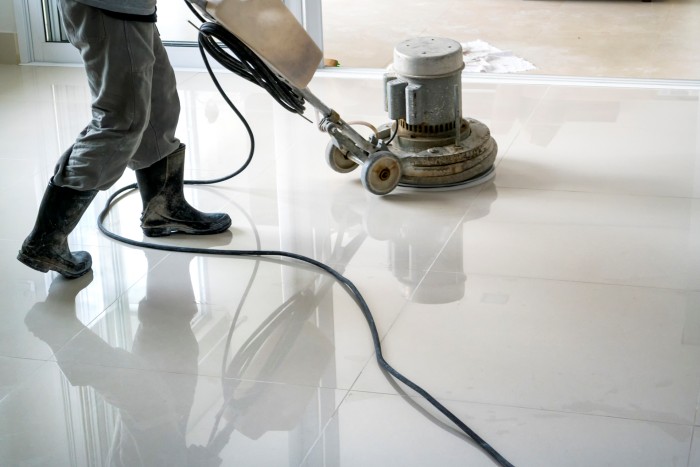Introduction
Granite is a highly sought-after stone known for its use in countertops, floors, fireplaces, and a variety of decorative applications. Polishing a granite surface can enhance its appearance, adding a texture of finesse and luster. While this task usually requires professional tools and skills, there are some methods that can help polish your granite surface at home. This article will explore some effective granite polishing methods, providing insights to help people achieve stunning results on their granite surfaces.
Hand Grinding and Polishing of Granite Surfaces
Hand sanding and polishing granite is a meticulous process that requires attention to detail and the use of various grits of sandpaper to achieve a smooth and shiny surface. While it is generally recommended to use professional tools and skills to complete this task, the following steps can guide individuals to effectively sand and polish granite surfaces by hand at home.
1. Grind smooth with coarse sandpaper:
Begin the hand sanding process by using 30 to 60 grit sandpaper to smooth out any rough and raised areas of the granite surface. The sandpaper must be kept moist to prevent the granite from overheating and cracking. This initial step sets the stage for subsequent refinement, ensuring that the surface is gradually prepared for polishing.
2. Grind with medium sandpaper:
Transition to 80 to 120 grit sandpaper to further smooth the surface, maintaining the wet sanding technique to protect the sandpaper and granite. This stage contributes to the gradual refinement of the surface, ensuring that imperfections are resolved and the texture becomes increasingly uniform and smooth.
3. Finely grind with high-grit sandpaper:
Use 200 to 400 grit sandpaper to finely sand the surface until it begins to shine. This stage marks a major shift towards achieving a glossy and polished surface, enhancing the natural beauty of the granite. Using a higher grit sandpaper will help improve the refinement and visual appeal of the surface.
4. Final polish with fine-grained “terrazzo” sandpaper:
The hand sanding and polishing process is done using 600 to 1500 grit “terrazzo” sandpaper. This final step is critical to achieving a flawless, lustrous finish that enhances the fine texture and shine of your granite surface. Using fine-grit “terrazzo” sandpaper contributes to the overall refinement and visual appeal of the surface, ensuring a stunning result.
Mechanical Grinding and Polishing of Stone Surfaces
Mechanical grinding and polishing methods can improve the quality and beauty of stone surfaces, and improve efficiency and effectiveness. Compared to manual methods, mechanical techniques offer a faster and simpler solution to achieve the desired shine and texture.
1. Stone polishing machine:
Using a stone polisher is a very effective method of mechanically grinding and polishing stone surfaces. By pressing the machine against the granite, the grinding head automatically moves in a specific pattern, grinding the surface until the desired shine is achieved. This automated process ensures consistent and precise results, increasing the efficiency and quality of the polishing process. Stone polishing machines provide a reliable and convenient solution for achieving a lustrous finish on stone surfaces.
2. Drilling machine with grinding wheel:
Another mechanical method of grinding and polishing stone surfaces involves using a drill equipped with a grinding wheel. By placing a water-soaked grinding wheel at the appropriate width and rotating it over the granite, the grinding wheel effectively grinds the surface until the desired gloss is achieved. This method provides a practical and efficient way to achieve polished surfaces, providing versatility and precision in the polishing process. It should be noted that the cutting surface of this mechanical device may need to be reprocessed to further improve the surface quality of the slices.
Advantages of mechanical methods:
Mechanical grinding and polishing methods offer several advantages over manual techniques. These include increased speed and efficiency, consistent results, and reduced physical effort. The use of mechanical equipment ensures the accuracy and uniformity of the polishing process, contributing to the overall quality and beauty of the stone surface. Additionally, mechanical methods are ideal for larger projects, providing a practical and time-saving solution for achieving polished stone surfaces.
Troubleshooting Common Granite Polishing Problems: Solutions and Prevention
1. Treat granite scratches:
Scratches on the surface of your granite can affect its appearance. To fix this problem, gently wipe the affected area with a small amount of sand and water. The surface can then be further refined by continuing the grinding and polishing process with finer sandpaper. This method effectively smoothes the surface and reduces the visibility of scratches, restoring the granite to its original luster.
2. Prevent granite from cracking during grinding:
It is crucial to prevent your granite from overheating and cracking during the grinding process. The granite surface must be kept moist throughout the grinding process to dissipate heat and minimize the risk of cracking. Additionally, avoiding prolonged contact with the granite surface during the grinding process helps prevent excessive heat buildup and ensures that the integrity of the granite is maintained.
3. Maintain gloss after grinding and polishing:
If the gloss of the granite surface decreases after polishing, it may be because the sandpaper used is too rough or the polishing is not thorough. To solve this problem, it’s important to make sure you use the right sandpaper grit to achieve the desired smoothness and gloss. Thorough, systematic grinding and polishing are essential to maintaining the luster of your granite surface and ensuring a flawless, refined finish.
Conclusion
Granite is a high-end building material known for its durability and beauty. Polishing the surface of granite can enhance its smoothness, finesse, and gloss, making it more beautiful and durable. While the polishing process requires professional tools and skills, it can also be done at home. A polished finish can significantly improve the visual impact and aesthetics of the entire space and is worth doing.
Post time: Jul-12-2024

